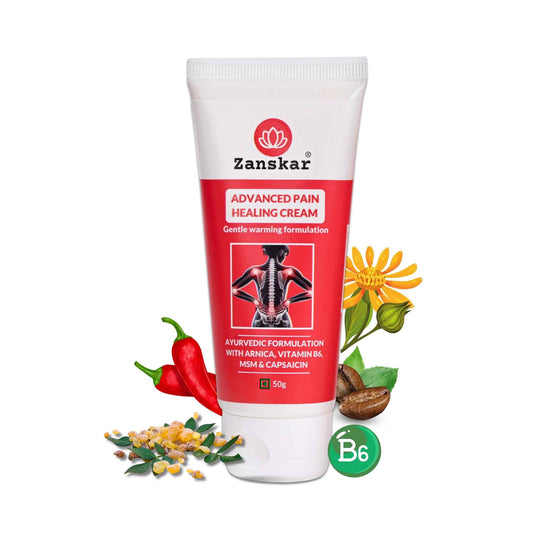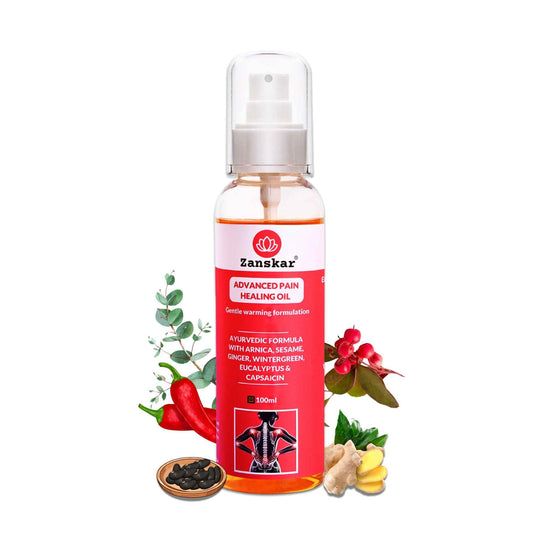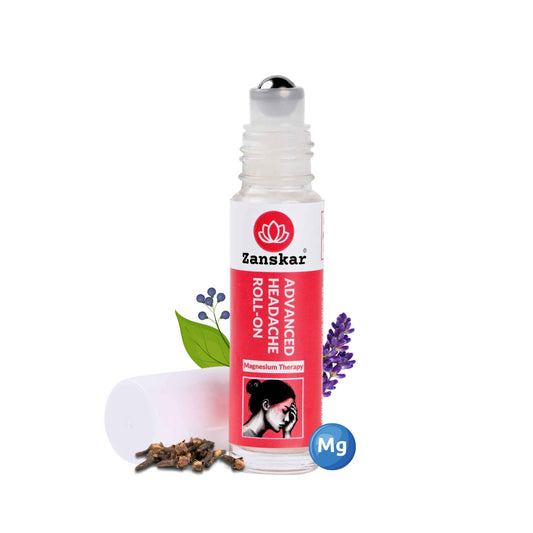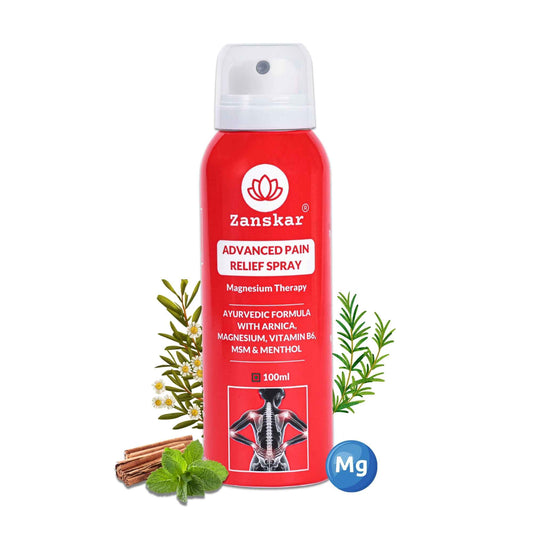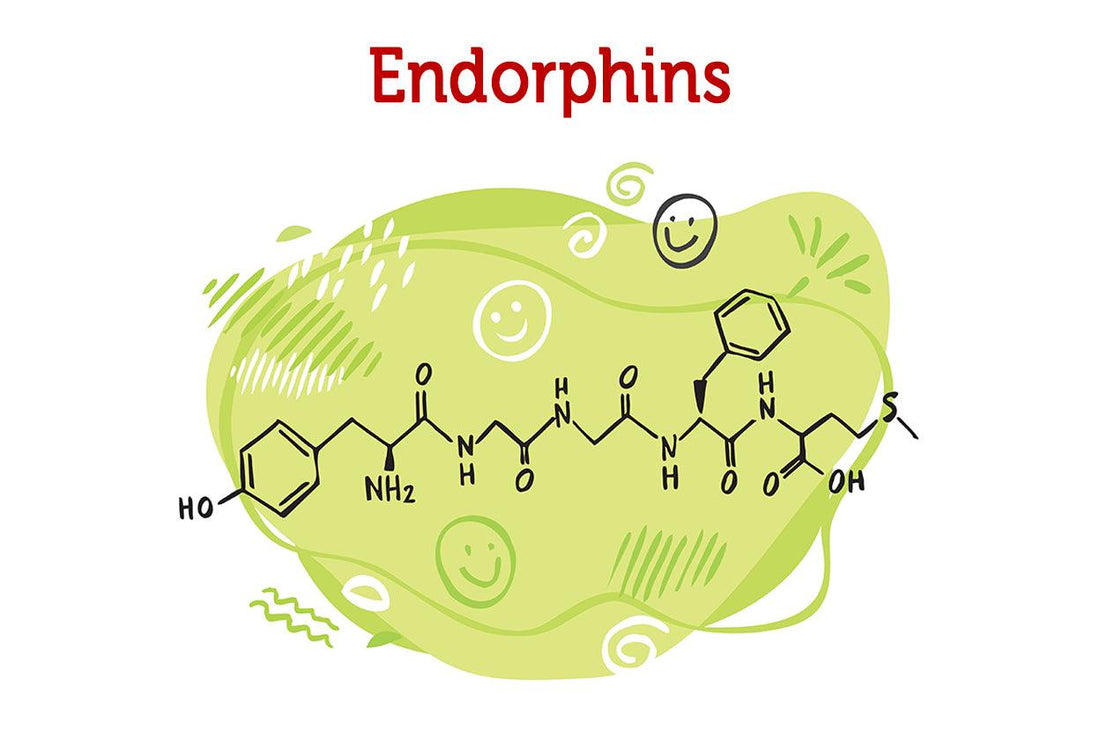
5 Tips for Boosting Endorphins – The Brain's Natural Painkillers
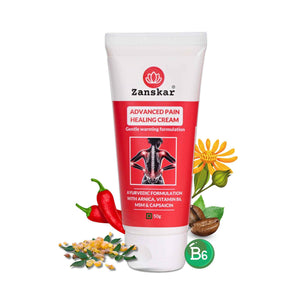
Endorphins are among the brain chemicals known as neurotransmitters, which function to transmit electrical signals within the nervous system. Endorphins can be found in the pituitary gland, in other parts of the brain, or distributed throughout the nervous system.
A Surprising Discovery in the Brain
In the 70s and 80s, several groups of scientists discovered that our brains have specific receptors that bind opiates like morphine. This was puzzling, until they realised that our bodies also make morphine-like molecules that bind to those same receptors.
These molecules, called endorphins, are neuropeptides produced by the central nervous system and the pituitary gland. They’re released when the body encounters pain or stress, and their role is to inhibit the communication of pain signals. The name comes from the combination of “endogenous” – meaning made by the body – and “morphine.” Which led to the branding of endorphins as natural painkillers.
While the body is programmed to produce endorphins in response to pain, research shows that it actually produces fewer endorphins when given opioid painkillers – like codeine or morphine. Therefore, any patient concerned with reducing his or her dependence on opioids should have an interest in boosting endorphins as a meaningful, non-addictive addition to their pain management program.
Brain's Natural Painkillers
Stress and pain are the two most common factors leading to the release of endorphins. Endorphins interact with the opiate receptors in the brain to reduce our perception of pain and act similarly to drugs such as morphine and codeine. In contrast to the opiate drugs, however, activation of the opiate receptors by the body's endorphins does not lead to addiction or dependence.
In addition to decreased feelings of pain, secretion of endorphins leads to feelings of euphoria, modulation of appetite, release of sex hormones, and enhancement of the immune response. With high endorphin levels, we feel less pain and fewer negative effects of stress.
Tips to boost Endorphin production
For chronic pain sufferers who are interested in naturally boosting endorphins, here are six suggestions:
1. Exercise: While primarily utilized for managing stress and maintaining a healthy weight, studies reveal that workouts also boost endorphin levels. How much exercise does the trick? Experts say that any amount of exercise is good, but 30 minutes a day, five times a week of moderate intensity exercise has been shown to produce benefits.
2. Chocolate: Dark chocolate has an abundance of health benefits when consumed in moderation. Among them is that it contains PEA (phenylethylamine), which is a feel-good endorphin released by the brain when we’re falling in love.
3. Spicy Food: Spicy food lovers will be excited about this news. Capsaicin, the spicy part of peppers, can fool the brain into releasing endorphins because it activates pain receptors. Maybe it’s not enough reason for everyone to gamble on spicy street food, but those who are already indulging will likely benefit from this unexpected positive side effect.
4. Laughing: Whether giggling with a group or having a chuckle by yourself, one study shows that pain thresholds go up after laughing. The conclusion is that, because laughter is a physical response, the combination of exhalations of breath and muscle use can trigger an endorphin release.
5. Aromatherapy: Smelling the fragrance of rosemary or vanilla could help stave off pain, according to one analysis. While it’s been shown to have more impact on short-term pain than long-term pain, it’s also a simple pleasure that can help elevate mood.
Note: Endorphin release varies among individuals. This means that two people who exercise at the same level or suffer the same degree of pain will not necessarily produce similar levels of endorphins. Same goes for ingestion of chocolates or capsaicin.
Frequently Asked Questions
What is the difference between endorphins and dopamine?
Endorphins and dopamine are both chemicals in your body that make you happy, but they function in different ways. Endorphins relieve pain naturally. When they attach to your brain’s reward centers (opiate receptors), dopamine is then released.
For example, endorphins will naturally help soothe a runner’s achy muscles. Then dopamine will be released, producing a runner’s high. Dopamine motivates you to do something over and over again. So endorphins and dopamine do work together.
Is serotonin an endorphin?
No. Endorphins and serotonin are both chemicals in your body that make you happy, but they function in different ways. Serotonin helps stabilize your mood and well-being. It helps other systems in your body function as well. Endorphins are focused on pain relief and stress relief.
Learn More About Zanskar Health
If you have joint or muscle pain that makes it hard to move, Zanskar offers the most advanced full stack pain relief solutions for you.
Now available to purchase, Zanskar® Advanced Pain Healing Cream has a unique formulation of natural ingredients like Arnica, Vitamin B6, MSM and Capsaicin, which is trusted by over 20L+ pain sufferers globally. It provides lasting relief from muscle and joint discomfort that you can feel good about. Get your fix before stocks run out - buy now.
You can also gain access to therapeutic exercises and stretches for your condition by downloading the Zanskar Health physiotherapy mobile app. Additionally, you’ll have a personal care team to guide, support, and tailor our program to you, including behavioral and nutritional coaching.
Download our mobile app here 👉 download and track your exercise streak.
Medical Review: This article is written by Dr Nishtha Mittal (Senior Health Content Editor at Zanskar Health) and has been medically reviewed by Dr Rashi Goel (Senior Physiotherapist at Zanskar Health). This article and its contents are provided for educational and informational purposes only and do not constitute medical advice or professional services specific to you or your medical condition.




